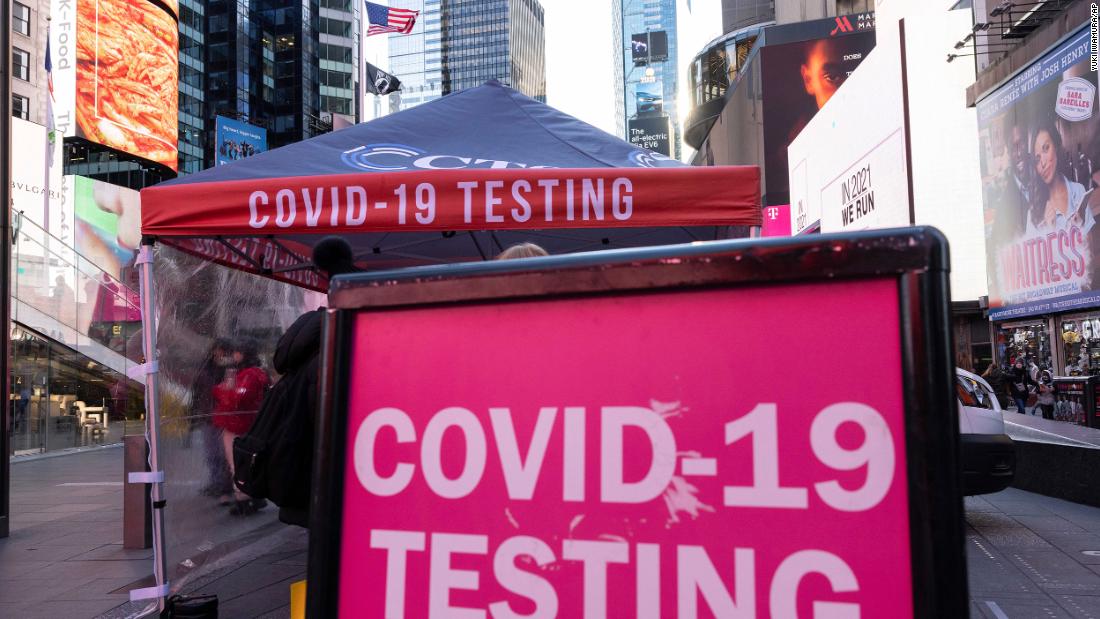Analysis: Did the press overhype the danger posed by the Omicron variant?
When news of Omicron emerged over the Thanksgiving holiday, media organizations scrambled to cover the new variant and what it might mean for the world. The problem, however, was that very little was known about it at the time. And so, the absence of data created a void that was quite unfortunately filled with a lot of speculation.
The speculation about Omicron did not air on the optimistic side of things. Instead, worst case scenarios played out in stories. Scary quotes about a “Frankenstein” escape variant were plugged into headlines, chyrons, and push alerts.
The situation was portrayed as a five-alarm fire. Consuming even a tiny dose of the coverage — whether it was through television, the internet, or even a good old-fashioned newspaper — probably left a not insignificant part of the audience wondering whether the current vaccines would offer any protection at all against the variant.
“When the variant was identified basically nothing was known about the virus other than it contained dozens of mutations. There was no clinical or epidemiological data to provide any kind of context to the public,” CNN medical analyst Dr. Jonathan Reiner told me Wednesday, saying that he believes the press had “overhyped the peril” of Omicron. “Yet without any scientific foundation the public was warned that this variant could evade all our vaccines. As a consequence the stock market tanked and governments closed their borders. All of this without any data. … Now almost two weeks out, thing look less dire.”
Indeed, fast forward to present time and the actual data is presenting a different picture.
Tenor of coverage matters
To be clear, I’m not saying that Omicron doesn’t pose challenges to the world, especially given that most people are not boosted and we are on the cusp of the holiday season when people will be traveling and spending time indoors with their loved ones. And it is not to say that newsrooms were wrong to cover Omicron early on. It was, and continues to be, an important story.
But the early tenor of coverage doesn’t look so good in retrospect. It placed an emphasis on amplifying the worst fears of the scientific community, particularly the worry that the current vaccines available in the US would prove ineffective against the variant. It hyped conjecture. It fueled panic.
The coronavirus is not going away anytime soon. We are going to be living with it for some time. In the future, when we are almost certainly faced with another variant of concern, newsroom leaders must work better to resist the temptation to portray it in the most frightening terms and wait for data to roll in.
This is, of course, easier said than done. Patience is not something that newsrooms are the best at. And there is a need to fill airtime, get eyeballs reading stories, and satisfy the SEO gods. I’m sure that when news of Omicron emerged during the holiday weekend, when the news cycle slows, these factors were intensified.
But acting cautiously, waiting for data, and not rushing to lean into nightmare scenarios is important — now, more than ever…
Credibility is on the line
This is obvious, but worth repeating: When news orgs play up worst case scenarios that do not come to fruition, the audience is less likely to heed such warnings in the future and they are more likely to grow cynical and simply tune out coverage as noise. In the long run, it pays off to be prudent and to reject the impulse to sensationalize.
We also live in the age of information wars. Already, bad faith actors are using this latest episode of media overreach to suggest the press cannot be trusted on anything. For instance, I was watching Laura Ingraham’s show on Fox the other night and she was railing against the media’s coverage of Omicron. “COVID FEARMONGERS FORCED TO FACE REALITY,” her first chyron declared. Ingraham then slyly transitioned to questioning the entire concept of vaccinating children, something that is supported by scientific data. “COVID FEARMONGERS PUSH JUNK SCIENCE ABOUT KIDS,” her second chyron said. In other words, bad faith actors will exploit media missteps for their own dishonest ends…
Let’s robustly cover the encouraging news
No one can go back in time to tone down the coverage from two weeks ago. But newsrooms can choose right now to amplify the pieces of encouraging news relating to the Omicron variant. Plenty of it has emerged over the last 72 hours. Such information should receive the same intensity of coverage as the previous coverage from two weeks ago…
![]()


